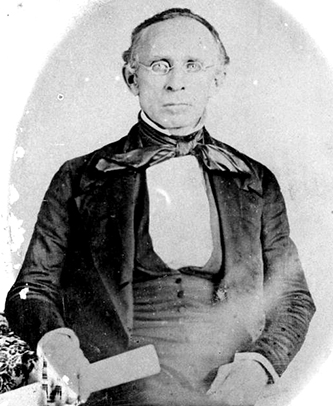1 Feb. 1795–4 Jan. 1863
William Dunn Moseley, first governor of Florida, was born at Moseley Hall in Lenoir County, the son of Matthew and Elizabeth Herring Dunn Moseley. A descendant of colonial official Edward Moseley, he graduated from The University of North Carolina in 1818 and received an M.A. degree in 1821. In 1817 he served as a tutor at the university, but after his graduation he studied law, was licensed to practice, and opened an office in Wilmington. Like many young lawyers of the time, while trying to establish a practice he farmed and taught school. Moseley represented his native county in the state senate continuously from 1829 to 1837 and served as speaker for the four terms between 1832 and 1835.
After ending his legislative service in North Carolina, Moseley moved to Jefferson County, Fla., where he had purchased a plantation. In 1840 he was elected to the Florida territorial house of representatives, and four years later he won a seat in the territorial senate. In 1845 he was elected the first governor of the state of Florida, taking office on 25 June. Among his duties were the establishment of a state government, overseeing the state's role in the War with Mexico, and resolving conflicts between white settlers and Seminole Indians. It was also during his administration that the federal government built Fort Jefferson on one of the coral keys off the southern coast of his state and Fort Clinch in Fernandina. Constitutionally limited to a single term, Moseley returned to his plantation in 1849. Two years later he settled in the town of Palatka, where he stayed the remainder of his life.
In 1822 Moseley married Susan Hill, and they became the parents of six children. After his death a portrait, painted from a daguerreotype, was presented by two of his daughters to be hung in a state portrait gallery in the Florida capitol.
